Do you ever look at a painting and can’t even begin to imagine how the artist created such an interesting surface, texture, color, or effect? Artists experiment with all kinds of techniques to produce their beautiful and intriguing compositions. Here are some of our favorites!
Resin
Resin is used by many artists to create a high-gloss, clear finish on the surface of their work. Typically it is poured in its liquid form onto the surface of the work where it then hardens into a solid plastic. Artists like Anke and Craig Alan get their signature smooth, shiny, and vibrant surfaces using this process.
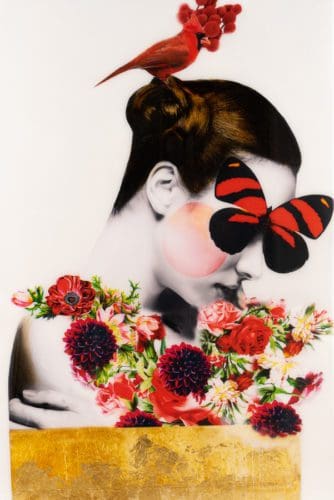
Here in Anke’s Redbirds, resin is poured over the surface to enhance the vivid graphic elements of the piece and give the mixed media surface a smooth texture. The technique is used similarly in Craig Alan’s Populus series to create a gloss effect that references the pop art movement that Alan draws so much inspiration from.
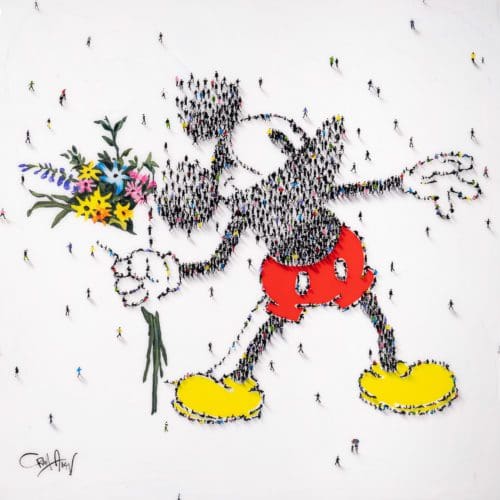
Craig Alan: View More Work | In the Artist’s Studio | Learn More
Anke: View More Work | In the Artist’s Studio | Learn More
Impasto
Impasto is the process of applying paint in thick layers so that the brush or knife strokes are visible and the paint appears to come off of the canvas. This gives a painting dimension and texture.
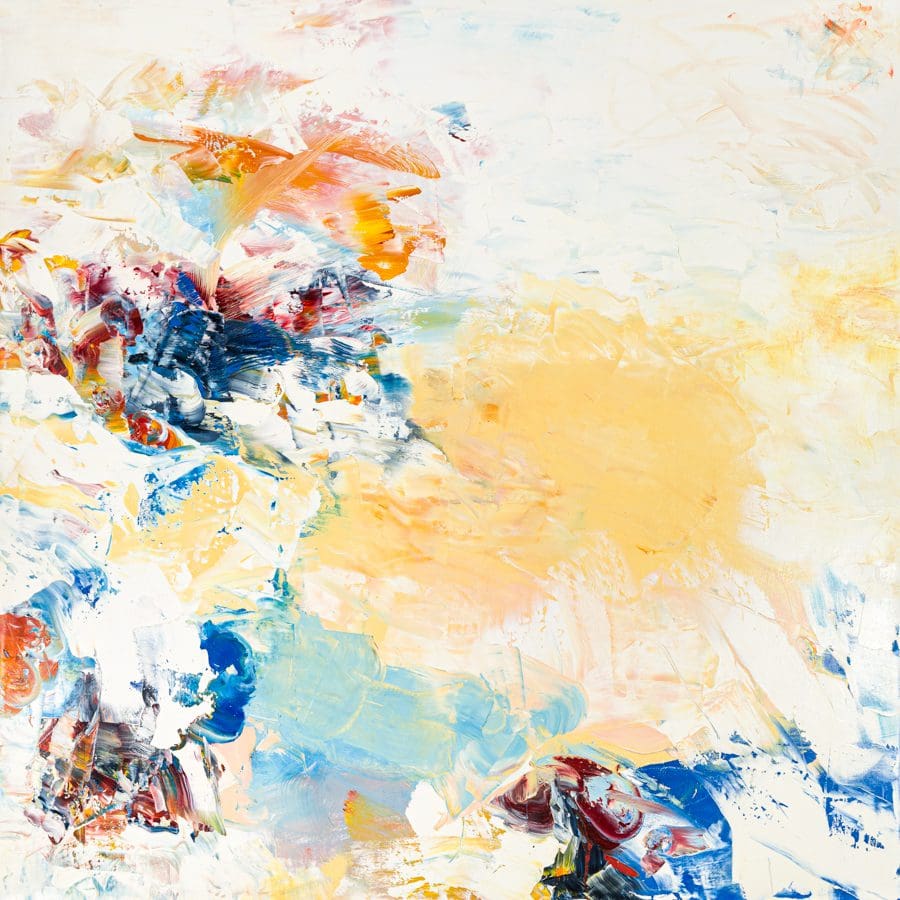

In her work, Chris Hayman creates a sense of depth by applying paint with both a palette knife and brush, layering textures and colors to create the rich atmospheres of her paintings. Hunt Slonem’s use of impasto lends to the playful quality of his imagery, giving it a loose and relaxed yet dense feeling.


Chris Hayman: View More Work | In the Artist’s Studio | Learn More
Hunt Slonem: View More Work | In the Artist’s Studio | Learn More
Transparent Layers
Quite the opposite of impasto, many artists create depth and texture with thin, diluted layers of color. Often poured onto the surface and mixed with washes of varying opacities, these translucent forms create dimension and a unique sense of space.
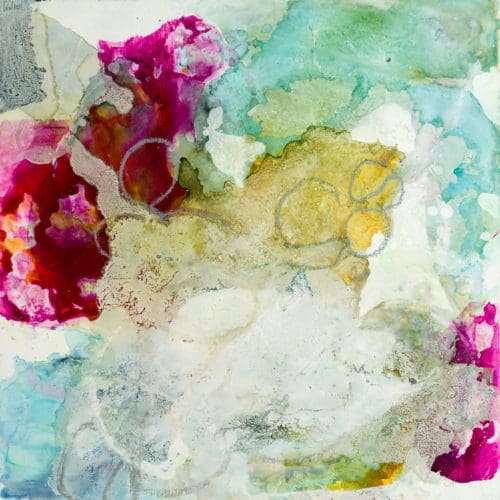
Liz Barber’s process involves pouring washes of color along with water and other materials to create an effect where the pigment separates and spreads into beautiful organic shapes. Drawing from her background in watercolor, Wendy Westlake layers washes of acrylic with graphite and crayon on raw canvas, a more controlled process that results in a linear and precise composition of shapes.
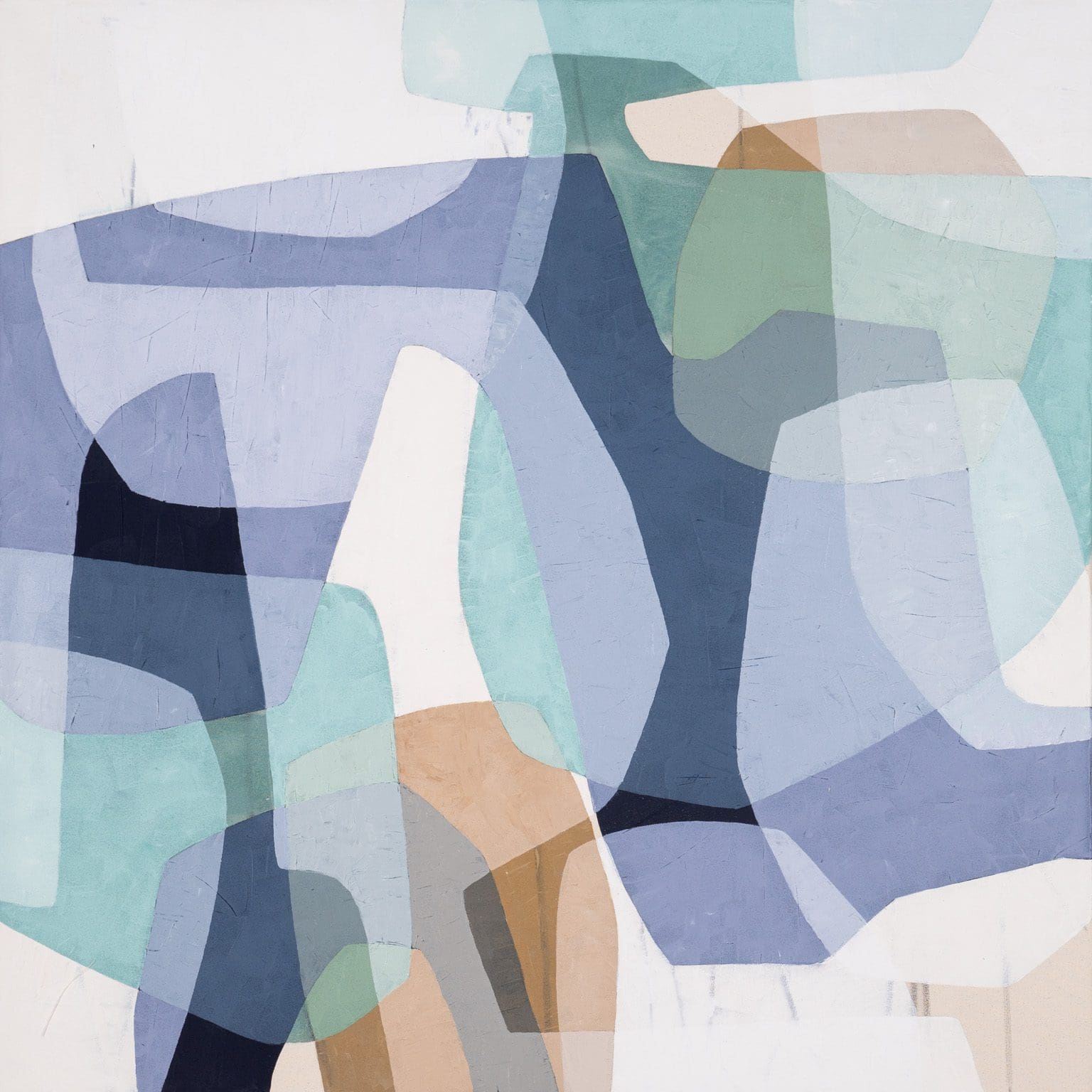
Liz Barber: View More Work | In the Artist’s Studio | Learn More
Wendy Westlake: View More Work
Collage
Artists like Nathalie Boissonnault and Mersuka Dopazo use collage to add interest to their paintings. By layering a variety of materials and images, they create elaborate compositions and narratives.



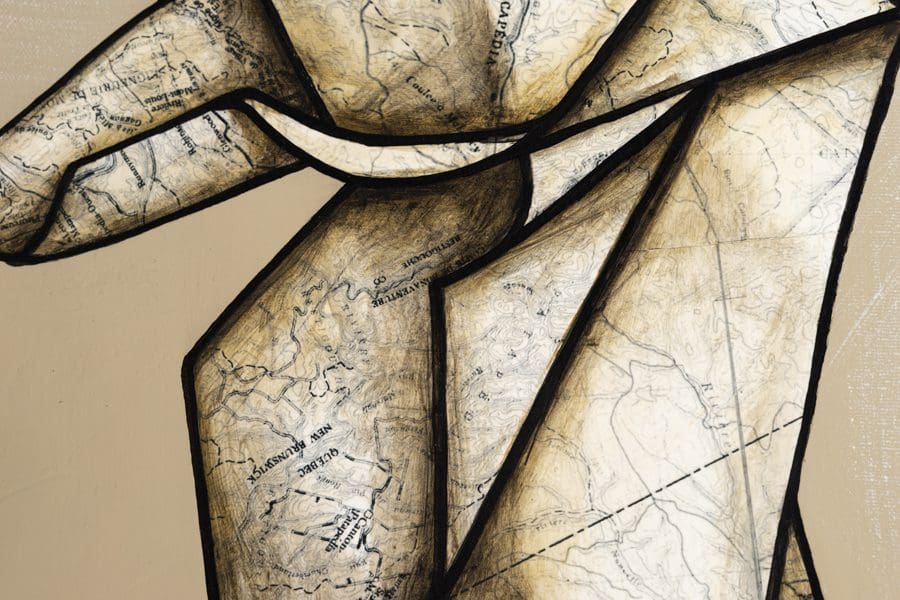
Mersuka Dopazo: View More Work | In the Artist’s Studio | Learn More
Nathalie Boissonnault: View More Work | In the Artist’s Studio | Learn More
Sanding
Unlike all of the additive techniques mentioned, sanding is a subtractive process where layers of paint are removed from the surface revealing what is behind them.

Audra Weaser describes her process as one of “excavation,” building up and then sanding down to reveal new elements of the painting. Similarly, David Rothermel paints several layers of saturated color on each of his panels, then uses a wet sanding process so that the bottom layers appear to glow through to the surface.

Audra Weaser: View More Work | In the Artist’s Studio | Learn More
David Rothermel: View More Work | In the Artist’s Studio | Learn More

